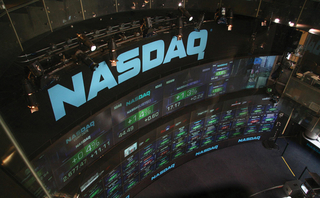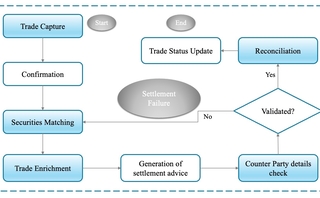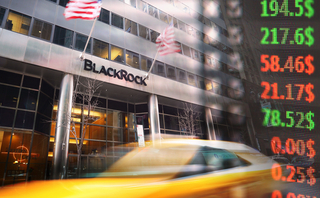Bloomberg creates one-stop shop for portfolio managers on Terminal
PM <GO> is a new workstation meant to support buy-side decision-making from analysis to implementation.

Bloomberg has been rolling out its new workspace for portfolio managers—a new interface and suite of capabilities designed to bridge the gap between analysis and implementation—to buy-side users of the Terminal, with more than 800 unique client environments up and running.
The workspace, PM <GO> on the Terminal, comes from the team behind Bloomberg’s Buy-Side Decision Support Solutions team, headed up by Aryeh Hauptman. The interactive workspace combines analytics, news, market data, and real-time liquidity insights to offer portfolio managers a space to develop, test, and implement investment theses, as well as quickly adjust their holdings according to market events, across asset classes and complex investment strategies.
“The asset and investment management system for portfolio managers continues to enhance our decision-making process and streamlines workflow,” says Terrence Ransford, partner and global head of investment operations at Aon. “The integrated cash and position management, combined with order modeling, provides a current and inflight portfolio view. This portfolio trade lifecycle is critical for decision-making and oversight.”
To a portfolio manager, capturing alpha remains the reason for being, and as data and analytics progress, the ability to find an edge over peers becomes more and more elusive, especially when working with multi-asset and individualized investment strategies. As Hauptman tells it, the idea behind PM <GO> has been Bloomberg’s endeavor to help PMs improve operational efficiency and identify opportunities for scalable innovation.
Users can determine and set the metrics they care about across their portfolio universe, and the interface’s rules-based system will call attention to any exceptions or outliers to their desired conditions and risk tolerance.
In a demo, Hauptman shows two panels for a group of European equity accounts managed by a bottom-up equity manager. In a summary panel, the user can view key metrics such as P&L, cash positioning, value-at-risk, and tracking error in relation to a model. In a deep-dive panel, those metrics get tied into the group’s active research, such as all the names they’re tracking in their strategy, related news events and heatmaps, or the frequency of related news.
Beyond that tie-in, those data points are next overlaid with the active positioning and analyst recommendations, including internal research and recommendations from the user’s own investment analysis and sell-side research Bloomberg has available.
“Portfolio managers are always on a constant quest for alpha, and to do that, they want to make sure they’re on the cutting edge of analytics, latest market liquidity, and what’s going on in their portfolio universe. That’s why I think what we’ve done around the architecture of PM makes it so special: it’s residing on top of both those enterprise and desktop properties that exist across Bloomberg’s investment lifecycle,” Hauptman says.
To build PM <GO>, the decision support group has invested heavily into an API architecture in order to draw data and insights from other parts of the Terminal, and Bloomberg as a whole, and bring various insights and calculations that normally require multiple interfaces or tools to unlock, into one application and experience.
The ideation for the workspace came from existing PM clients of Bloomberg, who had been pushing the vendor to create more of a one-stop shop for managing their portfolios. But Bloomberg isn’t alone in feeling this pressure. In 2020, Refinitiv made a similar move when it began decommissioning its longtime terminal Eikon and Thomson One range of workstations, replacing them with the aptly titled Workspace, another API-driven front-end display and data platform for buy-siders. Eikon is set to be fully sunsetted by the end of 2024.
The ultimate aims of PM <GO> include scalability, efficiency, and simplification. They also include automation, though not in the sense that human flair is made less critical. Instead, a key goal is to emphasize and better execute complexity and nuance in PMs’ strategies.
“I think automation is a term many use, and it’s very relevant for some strategies, whether it’s a passive or very low-touch strategy,” he says. “But there are many things that very active, bottom-up portfolio managers don’t want to automate. It’s their special sauce.”
With such a strong focus on surfacing timely insights, Hauptman says the decision support group is working closely with the broader Bloomberg organization on how AI—particularly the emerging area of generative AI and large language models, one which Bloomberg itself has launched—can help augment PM <GO> and its user experience. Though much of the value the workstation offers is in its individually tailored approach, the news heat map, for example, is currently driven by an AI model, and Hauptman says that such models are “closely intertwined” with how the team is thinking about the space.
Further reading
Only users who have a paid subscription or are part of a corporate subscription are able to print or copy content.
To access these options, along with all other subscription benefits, please contact info@waterstechnology.com or view our subscription options here: http://subscriptions.waterstechnology.com/subscribe
You are currently unable to print this content. Please contact info@waterstechnology.com to find out more.
You are currently unable to copy this content. Please contact info@waterstechnology.com to find out more.
Copyright Infopro Digital Limited. All rights reserved.
You may share this content using our article tools. Printing this content is for the sole use of the Authorised User (named subscriber), as outlined in our terms and conditions - https://www.infopro-insight.com/terms-conditions/insight-subscriptions/
If you would like to purchase additional rights please email info@waterstechnology.com
Copyright Infopro Digital Limited. All rights reserved.
You may share this content using our article tools. Copying this content is for the sole use of the Authorised User (named subscriber), as outlined in our terms and conditions - https://www.infopro-insight.com/terms-conditions/insight-subscriptions/
If you would like to purchase additional rights please email info@waterstechnology.com
More on Trading Tech
For MarketAxess, portfolio trading buoys flat revenue in Q3
The vendor is betting on new platforms like X-Pro and Adaptive Auto-X, which helped forge a record quarter for platform usage.
Quants look to language models to predict market impact
Oxford-Man Institute says LLM-type engine that ‘reads’ order-book messages could help improve execution
JP Morgan pulls plug on deep learning model for FX algos
The bank has turned to less complex models that are easier to explain to clients.
Nasdaq says SaaS business now makes up 37% of revenues
The exchange operator’s Q3 earnings bring the Adenza and Verafin acquisitions center stage.
Harnessing generative AI to address security settlement challenges
A new paper from IBM researchers explores settlement challenges and looks at how generative AI can, among other things, identify the underlying cause of an issue and rectify the errors.
The causal AI wave could be the next to hit
As LLMs and generative AI grab headlines, another AI subset is gaining ground—and it might solve what generative AI can’t.
Waters Wrap: Operational efficiency and managed services—a stronger connection
As cloud, AI, open-source, APIs and other technologies evolve, Anthony says the choice to buy or build is rapidly evolving for chief operating officers, too.
BlackRock forecasts return to fixed income amid efforts to electronify market
The world's largest asset manager expects bond markets to make headway once rates settle.








